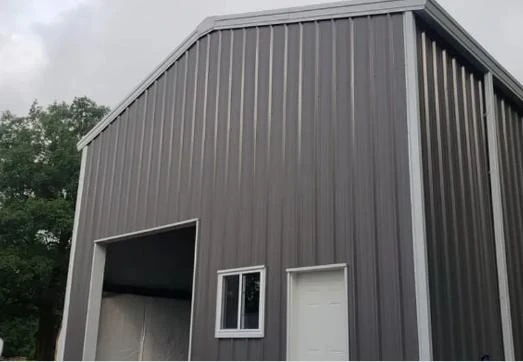- Afrikaans
- Albanian
- Amharic
- Arabic
- Armenian
- Azerbaijani
- Basque
- Belarusian
- Bengali
- Bosnian
- Bulgarian
- Catalan
- Cebuano
- Corsican
- Croatian
- Czech
- Danish
- Dutch
- English
- Esperanto
- Estonian
- Finnish
- French
- Frisian
- Galician
- Georgian
- German
- Greek
- Gujarati
- Haitian Creole
- hausa
- hawaiian
- Hebrew
- Hindi
- Miao
- Hungarian
- Icelandic
- igbo
- Indonesian
- irish
- Italian
- Japanese
- Javanese
- Kannada
- kazakh
- Khmer
- Rwandese
- Korean
- Kurdish
- Kyrgyz
- Lao
- Latin
- Latvian
- Lithuanian
- Luxembourgish
- Macedonian
- Malgashi
- Malay
- Malayalam
- Maltese
- Maori
- Marathi
- Mongolian
- Myanmar
- Nepali
- Norwegian
- Norwegian
- Occitan
- Pashto
- Persian
- Polish
- Portuguese
- Punjabi
- Romanian
- Russian
- Samoan
- Scottish Gaelic
- Serbian
- Sesotho
- Shona
- Sindhi
- Sinhala
- Slovak
- Slovenian
- Somali
- Spanish
- Sundanese
- Swahili
- Swedish
- Tagalog
- Tajik
- Tamil
- Tatar
- Telugu
- Thai
- Turkish
- Turkmen
- Ukrainian
- Urdu
- Uighur
- Uzbek
- Vietnamese
- Welsh
- Bantu
- Yiddish
- Yoruba
- Zulu
Oct . 16, 2024 13:06 Back to list
The Evolution and Significance of Architectural Steel Buildings
The use of steel in architecture marks a significant chapter in structural engineering, revolutionizing the design and construction of buildings. Architectural steel buildings have become synonymous with modernity, durability, and aesthetic versatility. This article delves into the evolution of architectural steel buildings, their benefits, and future prospects.
Historical Context
The origins of steel in architecture can be traced back to the late 19th century, coinciding with the industrial revolution. The introduction of steel beams and columns enabled architects to break free from the constraints of traditional building materials like timber and masonry. One of the earliest examples of steel construction is the Home Insurance Building in Chicago, completed in 1885, often heralded as the world’s first skyscraper. The use of steel allowed for greater height and larger open spaces, fundamentally changing urban skylines.
Advantages of Steel Structures
1. Strength and Durability Steel is renowned for its high strength-to-weight ratio. Buildings constructed with steel can withstand extreme weather conditions, seismic activities, and other structural stresses, making them a wise choice for urban areas prone to natural disasters.
2. Design Flexibility Steel’s malleability allows architects to explore innovative designs and forms that would be challenging or impossible with traditional materials. This flexibility has resulted in iconic structures, such as the Guggenheim Museum in Bilbao and the Burj Khalifa in Dubai, showcasing the aesthetic potential of steel.
3. Sustainability Modern architectural practices emphasize sustainability, and steel is inherently recyclable. Reusing steel reduces the environmental impact associated with production, making it an eco-friendly option in a world increasingly focused on sustainable building practices.
4. Speed of Construction Steel components can be manufactured off-site and assembled quickly on location. This prefabrication reduces construction timelines and minimizes disruption to the surrounding area, a significant advantage in bustling urban environments.
architectural steel buildings

5. Cost-Effectiveness Although steel can have a higher upfront cost compared to traditional materials, its durability and lower maintenance requirements often lead to reduced lifecycle costs. The speed of construction also translates to savings in labor costs.
Challenges and Considerations
Despite its many advantages, architectural steel buildings come with challenges. One notable concern is the issue of corrosion. Steel structures are susceptible to rust, necessitating protective coatings and regular maintenance. Additionally, fire resistance is a critical consideration in steel construction. While steel does not burn, it can lose strength when exposed to high temperatures. This necessitates careful planning and incorporation of fire-resistant materials and strategies.
The Future of Architectural Steel
As we move into the future, the role of steel in architecture is poised for further innovation. Advances in technology, such as 3D printing and smart materials, open new avenues for steel design and application. Moreover, the integration of building information modeling (BIM) is enhancing the efficiency of steel construction projects, allowing for better visualization and management of resources.
The rise of modular construction is another trend likely to influence the architectural steel sector. Prefabricated steel modules could provide a solution for affordable housing, meeting the growing demand for sustainable urban living spaces.
Conclusion
Architectural steel buildings stand at the intersection of art and engineering, embodying the spirit of innovation and progress. From their historical roots to their contemporary applications, steel structures continue to redefine urban landscapes. As we embrace technological advancements and prioritize sustainable practices, the future of architectural steel promises to be both exciting and transformative. Steel has not only shaped our skylines but will continue to shape our built environment in the years to come, reinforcing its status as a vital material in architecture.
-
How Do Prefabricated Steel Structures Transform Modern Construction?
NewsJul.14,2025
-
How Do Prefabricated Metal Buildings Redefine Modern Construction?
NewsJul.14,2025
-
How Do Prefab Insulated Metal Buildings and Steel Structures Revolutionize Modern Construction?
NewsJul.14,2025
-
How Do Pre - Engineered Steel Structures Redefine Modern Construction?
NewsJul.14,2025
-
Advancing Modular Construction with Prefabricated Metal Structures
NewsJul.14,2025
-
Advancing Industrial Infrastructure with Prefabricated Steel Solutions
NewsJul.14,2025
Products categories
Our Latest News
We have a professional design team and an excellent production and construction team.












